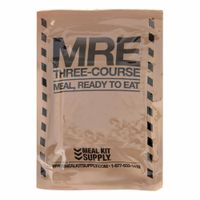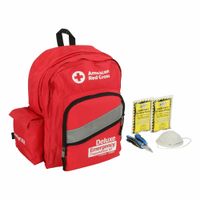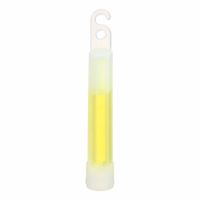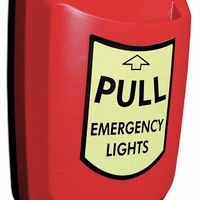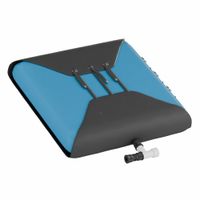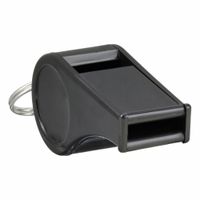Call +(254) 703 030 000 / 751 483 999 / 721 704 777
- Home
- Safety
- Emergency Preparedness Products
- Emergency Survival Kits Rations
.....Read More
Frequently Asked Questions
What should be included in an emergency survival kit?
An emergency survival kit should include essential items to sustain life and ensure safety during a crisis. Key components are:
1. **Water and Purification**: At least one gallon per person per day for three days, plus water purification tablets or a filter.
2. **Food**: Non-perishable items like canned goods, energy bars, and dried fruits for at least three days.
3. **Shelter and Warmth**: Emergency blankets, a tent or tarp, and hand warmers.
4. **First Aid Kit**: Bandages, antiseptic wipes, pain relievers, and any personal medications.
5. **Tools and Supplies**: A multi-tool, duct tape, rope, and a whistle.
6. **Lighting and Communication**: Flashlights with extra batteries, a battery-powered or hand-crank radio, and a fully charged power bank.
7. **Clothing and Personal Items**: Sturdy shoes, a change of clothes, and personal hygiene items like toothbrushes and sanitary wipes.
8. **Navigation and Signaling**: A map, compass, and signal mirror.
9. **Important Documents**: Copies of identification, insurance policies, and emergency contact information in a waterproof container.
10. **Cash**: Small denominations for emergencies where electronic transactions are unavailable.
11. **Special Needs**: Items for infants, elderly, or pets, if applicable.
12. **Miscellaneous**: Notepad and pencil, safety pins, and a sewing kit.
Regularly check and update the kit to ensure all items are in working order and not expired. Tailor the kit to specific needs and local conditions.
How long do emergency food rations last?
Emergency food rations typically have a shelf life ranging from 5 to 30 years, depending on the type and packaging. Freeze-dried and dehydrated foods, often used in emergency kits, can last 20 to 30 years if stored properly in a cool, dry place. These foods are designed to retain nutritional value and taste over long periods. Canned goods, another common emergency food option, generally last 2 to 5 years, though they can remain safe to eat beyond the expiration date if the can is undamaged and stored correctly. High-energy bars and meal replacement bars, specifically formulated for emergencies, usually have a shelf life of 5 to 10 years. Vacuum-sealed or nitrogen-packed foods can also extend shelf life by reducing exposure to oxygen and moisture. It's crucial to regularly check expiration dates and rotate supplies to ensure freshness. Proper storage conditions, such as maintaining a stable temperature and avoiding direct sunlight, are essential to maximize the longevity of emergency food rations.
What is the best way to store emergency water?
The best way to store emergency water involves several key steps to ensure safety and longevity. First, choose appropriate containers. Use food-grade water storage containers made of durable, non-toxic materials like polyethylene or glass. Avoid containers that previously held chemicals or non-food substances.
Before filling, clean and sanitize containers thoroughly. Wash with soap and water, then rinse with a solution of 1 teaspoon of unscented liquid household chlorine bleach per quart of water. Rinse well with clean water.
Fill containers with tap water treated with a small amount of chlorine bleach to prevent microbial growth. Use 1/8 teaspoon of unscented liquid household chlorine bleach per gallon of water if the water is not treated by a municipal system. Seal containers tightly to prevent contamination.
Store water in a cool, dark place to minimize exposure to sunlight and heat, which can degrade containers and promote algae growth. Keep containers off the ground to prevent contamination and allow for air circulation.
Label containers with the date of storage and rotate the water supply every six months to ensure freshness. For long-term storage, consider commercially bottled water, which has a longer shelf life and is sealed for safety.
In addition to stored water, have water purification methods on hand, such as water purification tablets, filters, or additional bleach, to treat water if needed. Plan for at least one gallon of water per person per day for drinking and sanitation, and store enough for a minimum of three days, though a two-week supply is preferable.
By following these guidelines, you can ensure a safe and reliable emergency water supply.
How do emergency water purification systems work?
Emergency water purification systems work by removing contaminants and pathogens from water to make it safe for consumption. These systems typically employ a combination of physical, chemical, and biological processes to achieve purification.
1. **Filtration**: This is the first step, where water passes through filters to remove large particles like dirt, sand, and debris. Filters can be made of ceramic, carbon, or other materials that trap impurities.
2. **Sedimentation**: In some systems, water is allowed to sit so that heavier particles settle at the bottom. This process is often used in conjunction with filtration.
3. **Chemical Disinfection**: Chemicals such as chlorine, iodine, or chlorine dioxide are added to kill bacteria, viruses, and other pathogens. These chemicals are effective but require careful dosing to avoid harmful residues.
4. **Boiling**: Heating water to a rolling boil for at least one minute is a simple and effective method to kill most pathogens. However, it requires a heat source and is not always practical in emergencies.
5. **Ultraviolet (UV) Light**: UV purifiers use light to disrupt the DNA of microorganisms, rendering them harmless. This method is effective against bacteria and viruses but does not remove chemical contaminants or particulates.
6. **Reverse Osmosis**: This process forces water through a semi-permeable membrane, removing a wide range of contaminants, including salts, bacteria, and chemicals. It is highly effective but requires pressure and can be slow.
7. **Distillation**: Water is heated to produce steam, which is then condensed back into liquid form, leaving impurities behind. This method is effective but energy-intensive.
Emergency systems often combine these methods to ensure comprehensive purification, making water safe for drinking in crisis situations.
What are the essential PPE items for emergency preparedness?
Essential personal protective equipment (PPE) for emergency preparedness includes:
1. **Respiratory Protection**: N95 respirators or higher-grade masks protect against airborne particles and pathogens. Surgical masks can be used for lower-risk situations.
2. **Eye Protection**: Safety goggles or face shields protect against chemical splashes, debris, and infectious droplets.
3. **Gloves**: Disposable nitrile or latex gloves provide a barrier against contaminants and infectious materials. Heavy-duty gloves are necessary for handling debris or chemicals.
4. **Protective Clothing**: Coveralls or gowns made from non-permeable materials protect against chemical spills, biological hazards, and other contaminants.
5. **Foot Protection**: Steel-toed boots or shoes with slip-resistant soles protect against physical injuries and provide stability in hazardous environments.
6. **Hearing Protection**: Earplugs or earmuffs protect against noise pollution in environments with high decibel levels.
7. **Head Protection**: Hard hats protect against head injuries from falling objects or debris.
8. **High-Visibility Clothing**: Vests or jackets with reflective materials ensure visibility in low-light or high-traffic areas.
9. **First Aid Kit**: A comprehensive kit with bandages, antiseptics, and other medical supplies is crucial for immediate treatment of injuries.
10. **Communication Devices**: Two-way radios or mobile phones ensure effective communication during emergencies.
11. **Flashlight**: A durable, waterproof flashlight with extra batteries is essential for visibility in dark or power-outage situations.
12. **Fire Extinguisher**: A portable fire extinguisher is vital for controlling small fires.
These PPE items are crucial for ensuring safety and minimizing risks during emergencies, whether natural disasters, industrial accidents, or health crises. Regular training and drills are also essential to ensure proper use and effectiveness of PPE.
How many lightsticks should be in an emergency kit?
The number of lightsticks in an emergency kit can vary based on several factors, but a general recommendation is to include at least three to five lightsticks. This quantity ensures that you have enough to provide illumination for multiple nights or to distribute among family members or group members if needed. Lightsticks typically last between 8 to 12 hours, so having several on hand allows for extended use during prolonged emergencies. Additionally, consider the size of your household or group, the likelihood of needing to signal for help, and the potential duration of the emergency situation when deciding on the exact number.
How often should emergency kits be updated or checked?
Emergency kits should be updated or checked at least every six months. This regular schedule ensures that all items remain functional and effective in case of an emergency. During these checks, you should:
1. **Inspect Expiration Dates**: Many items in an emergency kit, such as food, water, medications, and batteries, have expiration dates. Replace any expired items to ensure they are safe and effective when needed.
2. **Evaluate Seasonal Needs**: Depending on the time of year, your emergency kit may require different items. For example, in winter, you might need extra blankets or hand warmers, while in summer, additional water and sunscreen might be necessary.
3. **Check Equipment Functionality**: Test all equipment, such as flashlights, radios, and any electronic devices, to ensure they are in working order. Replace batteries and repair or replace any malfunctioning items.
4. **Update Personal Information**: Ensure that all personal information, such as emergency contact numbers and medical information, is current. This is crucial for effective communication and assistance during an emergency.
5. **Reassess Family Needs**: As family dynamics change, so do the needs of your emergency kit. Consider any new family members, pets, or specific medical needs that may require additional supplies.
6. **Review Emergency Plans**: Alongside checking the kit, review your emergency plans to ensure they are still relevant and understood by all family members.
By adhering to a biannual schedule, you maintain a state of readiness, ensuring that your emergency kit is always prepared to support you and your family in a crisis.
